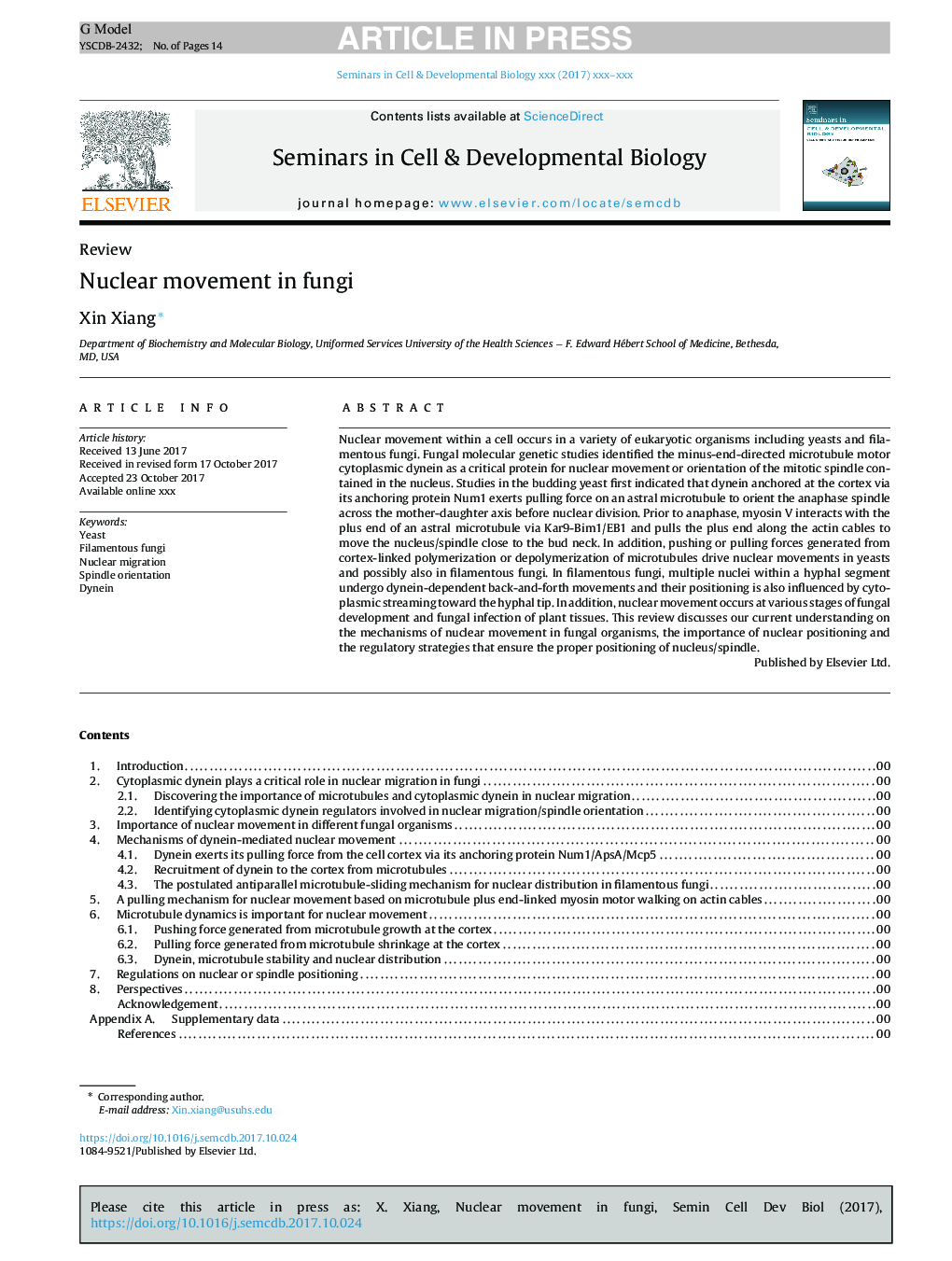| کد مقاله | کد نشریه | سال انتشار | مقاله انگلیسی | نسخه تمام متن |
|---|---|---|---|---|
| 10157917 | 1666494 | 2018 | 14 صفحه PDF | دانلود رایگان |
عنوان انگلیسی مقاله ISI
Nuclear movement in fungi
ترجمه فارسی عنوان
جنبش هسته ای در قارچ ها
دانلود مقاله + سفارش ترجمه
دانلود مقاله ISI انگلیسی
رایگان برای ایرانیان
کلمات کلیدی
موضوعات مرتبط
علوم زیستی و بیوفناوری
بیوشیمی، ژنتیک و زیست شناسی مولکولی
بیولوژی سلول
چکیده انگلیسی
Nuclear movement within a cell occurs in a variety of eukaryotic organisms including yeasts and filamentous fungi. Fungal molecular genetic studies identified the minus-end-directed microtubule motor cytoplasmic dynein as a critical protein for nuclear movement or orientation of the mitotic spindle contained in the nucleus. Studies in the budding yeast first indicated that dynein anchored at the cortex via its anchoring protein Num1 exerts pulling force on an astral microtubule to orient the anaphase spindle across the mother-daughter axis before nuclear division. Prior to anaphase, myosin V interacts with the plus end of an astral microtubule via Kar9-Bim1/EB1 and pulls the plus end along the actin cables to move the nucleus/spindle close to the bud neck. In addition, pushing or pulling forces generated from cortex-linked polymerization or depolymerization of microtubules drive nuclear movements in yeasts and possibly also in filamentous fungi. In filamentous fungi, multiple nuclei within a hyphal segment undergo dynein-dependent back-and-forth movements and their positioning is also influenced by cytoplasmic streaming toward the hyphal tip. In addition, nuclear movement occurs at various stages of fungal development and fungal infection of plant tissues. This review discusses our current understanding on the mechanisms of nuclear movement in fungal organisms, the importance of nuclear positioning and the regulatory strategies that ensure the proper positioning of nucleus/spindle.
ناشر
Database: Elsevier - ScienceDirect (ساینس دایرکت)
Journal: Seminars in Cell & Developmental Biology - Volume 82, October 2018, Pages 3-16
Journal: Seminars in Cell & Developmental Biology - Volume 82, October 2018, Pages 3-16
نویسندگان
Xin Xiang,
